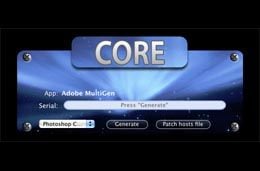
Cara Update Driver Opengl

Main article: This Wiki maintains a FAQ page for OpenGL. Downloading OpenGL In all three major desktop platforms (Linux, macOS, and Windows), OpenGL more or less comes with the system. However, you will need to ensure that you have downloaded and installed a recent driver for your graphics hardware.
Jan 24, 2018 - Adobe Photoshop Cs6 I have v1.1 of the OpenGL driver installed on my Windows 7 machine. I knew So, will updating the Intel driver also. Jump to Using Windows Update - Some recent graphics driver versions are made available. See Microsoft's support article, Update drivers in Windows.
Windows Appropriate Windows driver websites: • • • Some sites also distribute beta versions of graphics drivers, which may give you access to bug fixes or new functionality before an official driver release from the manufacturer: • Without drivers, you will default to a software version of OpenGL 1.1 (on Win98, ME, and 2000), a Direct3D wrapper that supports OpenGL 1.1 (WinXP), or a Direct3D wrapper that supports OpenGL 1.1 (Windows Vista and Windows 7). None of these options are particularly fast, so installing drivers is always a good idea. If your system does not contain a GPU, or the GPU vendor delivers graphics drivers providing OpenGL support that's so old as to be useless to you, you might want to consider installing the Mesa3D OpenGL library on your system. See this wiki link for details: • Linux Graphics on Linux is almost exclusively implemented using the X windows system.
Supporting OpenGL on Linux involves using GLX extensions to the X Server. There is a standard Application Binary Interface defined for OpenGL on Linux that gives application compatibility for OpenGL for a range of drivers. Qcom smart tool module. In addition the Direct Rendering Infrastructure (DRI) is a driver framework that allows drivers to be written and interoperate within a standard framework to easily support hardware acceleration, the DRI is included in of XFree86 4.0 but may need a card specific driver to be configured after installation. These days, XFree86 has been rejected in favor of XOrg due to the change in the license of XFree86, so many developers left Xfree86 and joined the XOrg group. Popular Linux distros come with XOrg now. Vendors have different approaches to drivers on Linux, some support Open Source efforts using the DRI, and others support closed source frameworks but all methods support the standard ABI that will allow correctly written OpenGL applications to run on Linux. • • • • For more information on developing OpenGL applications on Linux, see macOS Unlike other platforms, where the Operating System and OpenGL implementations are often updated separately, OpenGL updates are included as part of macOS system updates.
To obtain the latest OpenGL on macOS, users should upgrade to the latest OS release, which can be found at. For developers, a default installation of macOS does not include any OpenGL headers, nor does it include other necessary development tools.
These are installed by a separate developer tools package called Xcode. This installer includes the OpenGL headers, compilers (gcc), debuggers (gdb), Apple's Xcode IDE, and a number of performance tools useful for OpenGL application development. • • For more information on developing OpenGL applications on macOS, see. Writing an OpenGL Application The first step is to pick your language. Bindings for OpenGL exist in many languages, from C# and Java to Python and Lua. Some languages have multiple sets of OpenGL bindings, none of them being official.
All of them are ultimately based on the C/C++ bindings. If you are not using C/C++, you must download and install a package or library for your chosen language that includes the OpenGL bindings. Some come pre-installed, but others have separate downloads.  If you are using C/C++, then you must first set up a build environment (Visual Studio project, GNU makefile, CMake file, etc) that can link to OpenGL. Under Windows, you need to statically link to a library called OpenGL32.lib (note that you still link to OpenGL32.lib if you're building a 64-bit executable. The '32' part is meaningless). Visual Studio, and most Windows compilers, come with this library.
If you are using C/C++, then you must first set up a build environment (Visual Studio project, GNU makefile, CMake file, etc) that can link to OpenGL. Under Windows, you need to statically link to a library called OpenGL32.lib (note that you still link to OpenGL32.lib if you're building a 64-bit executable. The '32' part is meaningless). Visual Studio, and most Windows compilers, come with this library.